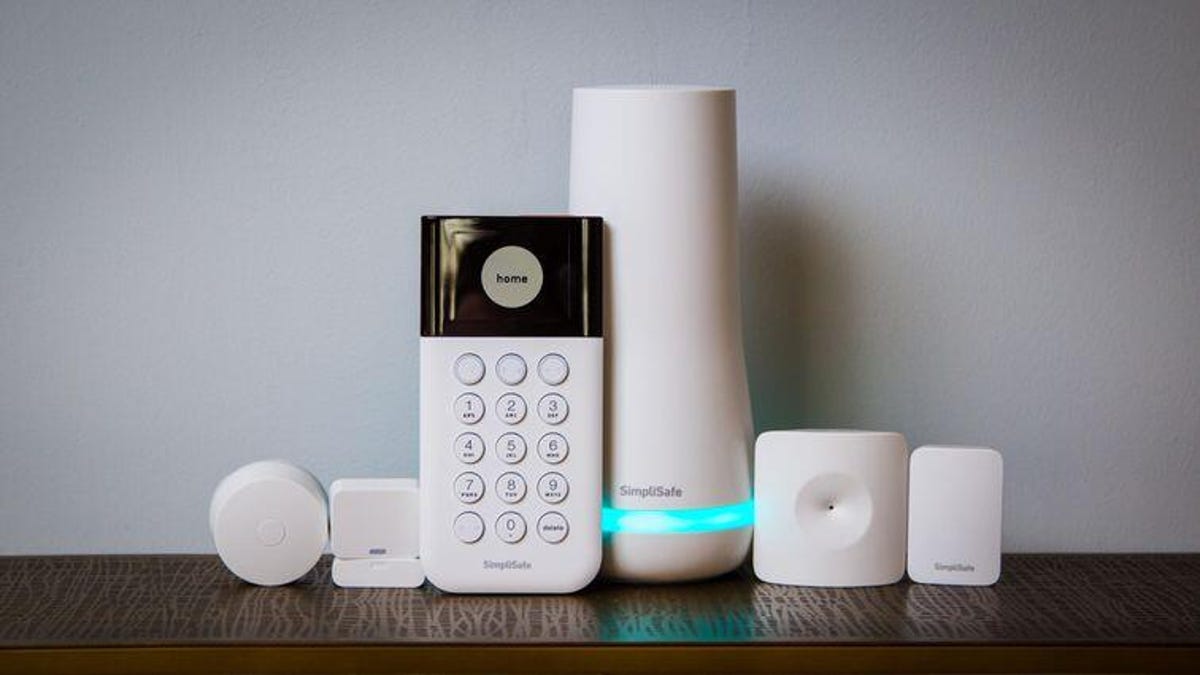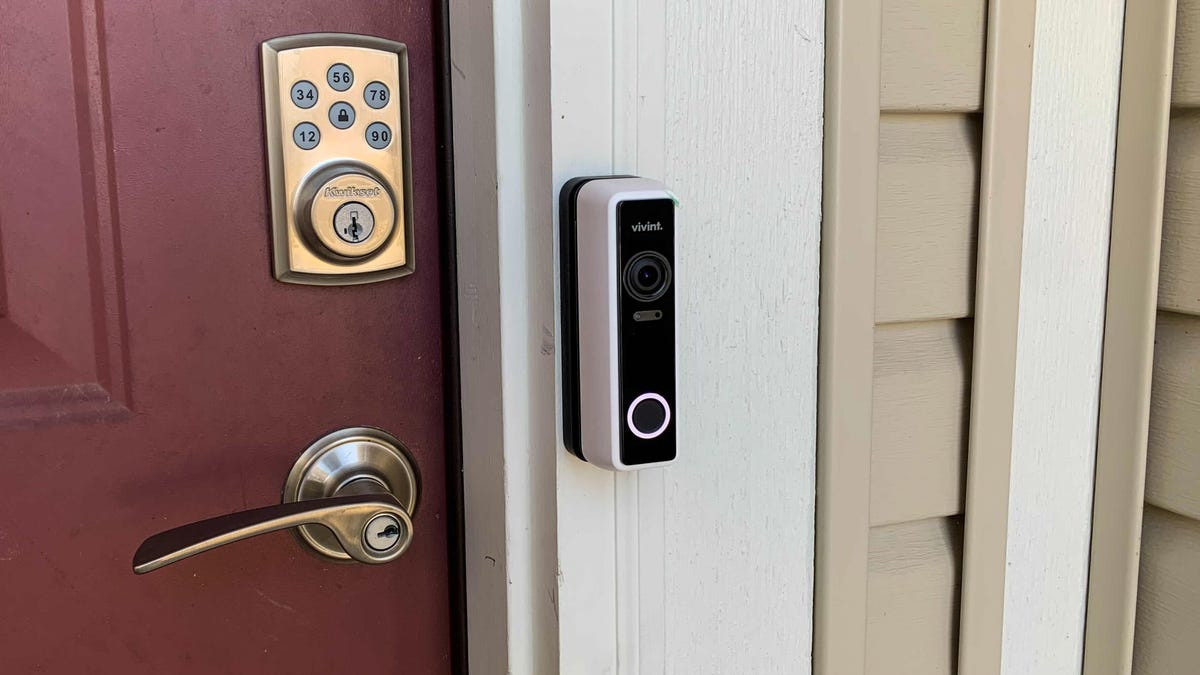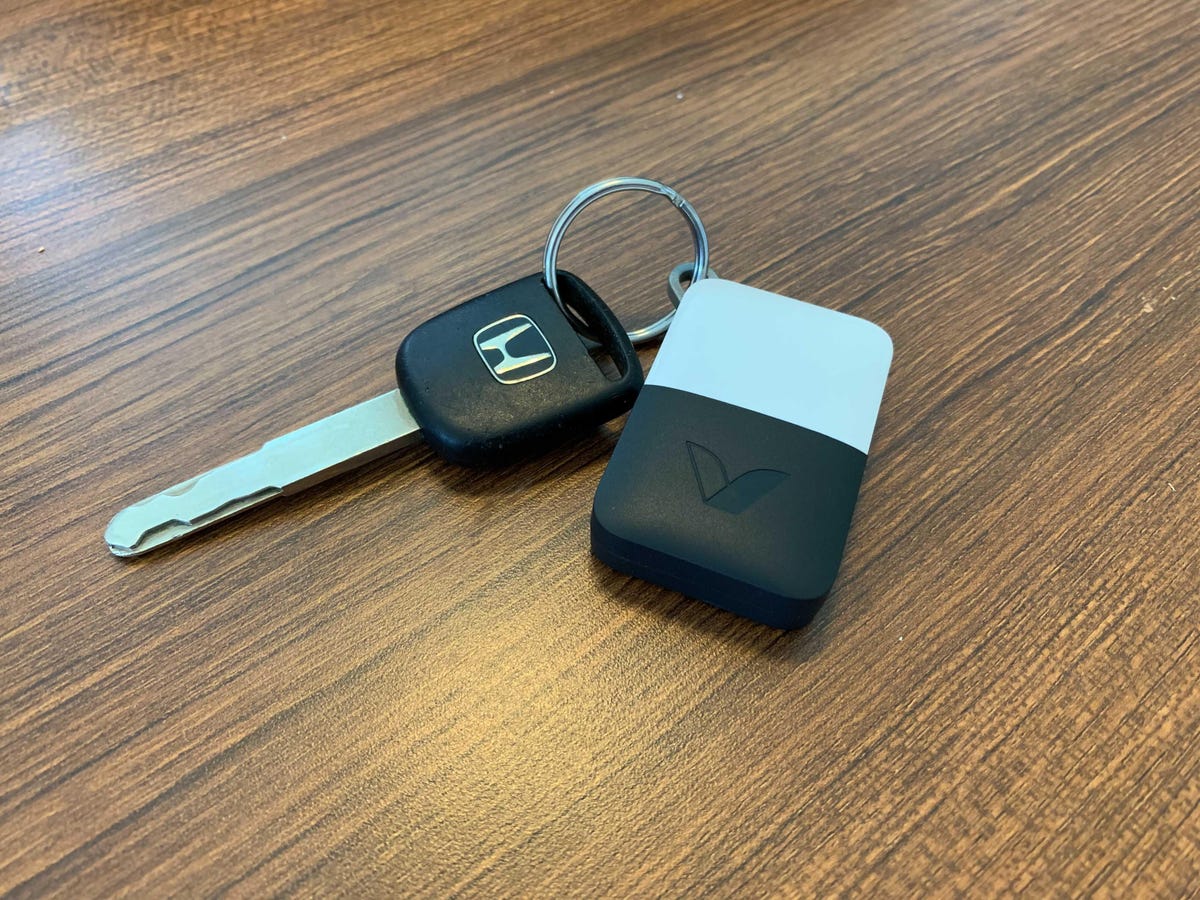When you pick out a home security system, you'll have to choose between DIY (you install all the components and handle the setup yourself) or a professional installation (someone comes out to your home and installs the system for you). With today's compact, often wireless sensors and cameras, most security systems can be DIY if you're willing to put in the work and climb a few ladders. Plus you can save money -- and we took at look at just how much you can save.
Read also: Best Home Security Systems for Renters
System installation costs by security brand
Going full DIY will, of course, save you the money you'd have to spend on having a local security worker visit your house and set up the system. DIY setup has no additional except your own time (which can be precious). But how much can you actually save? Let's break down the installation fees by popular home security brands:
- SimpliSafe: Starts at $125
- ADT: Around $150 but can vary based on the size of the security kit.
- Vivint: Vivint bundles installation costs into its quotes, which can vary significantly, but they seem to start at $100 and rise depending on the size of the system.
- Ring Alarm: Typically DIY but professional installation is available via OnTech starting at $130.
- Abode: Starts at $100
- Cove: Starts at $130
- Frontpoint: Starts at $100
- Comcast Xfinity: Our review installation cost around $60, but fees now start around $100 and can vary by location.
- Brinks Home Security: Brinks bundles installation costs in overall quotes which can vary, but they also seem to fall around $100.
Starting prices like these will rise for larger kits, especially those with more advanced devices like security cameras or video doorbells that take more time to set up. That's why average costs for a pro installation usually work out to around $200.
Finally, keep in mind that wired systems tend to be more expensive to set up than wireless security devices. If you need additional wiring work like a new outlet, running additional wiring in walls or adding an outdoor junction box, then installation costs skyrocket and the project is usually well beyond even the most capable DIYer. That's why wireless systems are such a boon to the modern homeowner.
What about activation fees?
Activation fees refer to an extra charge to turn a system on and set up monitoring. These fees aren't as common with today's wireless systems and may be waived with various deals or spending above a certain amount on a security system. If activation fees do apply, they're usually an extra $50 to $100 on top of the installation fee. Annoying, we know.
DIY services breakdown
A true DIY system allows you to build your kit before purchase. You might add certain devices to a cart right on the website, or select them with a salesperson over the phone. While you can sometimes pay for extra help, you're pretty much on your own for installation -- but the devices are usually fairly pain-free to set up since average customers are the target audience. Such systems include Ring Alarm, SimpliSafe, Abode and others. If you only want to set up a couple of devices, like a security cam and hub, then your options expand to Nest, Arlo and far more brands, but for this guide we're focusing on full home security kits.
Finally, note that there's some overlap between DIY and professional these days. Other companies that have traditionally required professional installation are offering DIY options, too, these days. Xfinity and Brinks are two examples, as well as ADT's latest self-install options. Conversely, even distinctly DIY systems like Ring offer professional help if you don't want to follow the setup guides online.

SimpliSafe is one of the most popular DIY systems on the market.
Chris Monroe/CNETAn interesting feature of DIY systems is that you can often get professional monitoring as an optional add-on -- or you can self-monitor, a more affordable middle way between professional monitoring and nothing. Different companies offer different prices with monitoring costing anywhere from $20 to $60 per month. Some kits don't require a monitoring fee at all, but major brands will often require you to pay at least a self-monitoring fee to use the system.
Finally, DIY options often give additional ways to save. For instance, SimpliSafe allows you to save 25% by purchasing refurbished devices directly from the company. If you don't need the latest and greatest, and are on a budget, a refurbished device can give you decent home monitoring. Additional add-ons can also help you both customize your system and keep on budget.
Professional installation breakdown
If finding deals and fiddling with your own monitoring system isn't your cup of tea, professional systems offer something a little more painless. These often come as pre-established kits, often offered in tiers, starting at base systems that give you devices like alarms, door/window sensors and control panels. Higher-tier kits add bells and whistles like smart cameras and connected deadbolts.
In these cases, the pros set up the system, activate it and show you how to use it. They can also offer advice or make choices about the placement of sensors, hubs and cameras. If you want a system that's highly regimented and easy to understand, an option like this could be a good choice. Professional installation is also important for buyers who simply don't have enough time or for homeowners with mobility issues who can't easily manage a full installation themselves.

We recently reviewed Vivint Home Security and were impressed with its integrations, even with third-party devices from Kwikset and Chamberlain.
David Priest/CNETProfessional installation is rarely required these days, but some home security companies may still make it mandatory, especially if you order a specific kind of system or promo deal. And speaking of promo deals, some special discounts may waive installation fees or otherwise make professional installations easier to afford.
Feature comparisons
Below we'll look at features that are common in DIY and professional security so you have a more complete picture of the costs for each.
Plans and contracts
Monitoring plans often include a monthly fee on top of the equipment purchased, again regardless of which system you opt for. Depending on what is included, you could pay anything from around $5 per month to $100 or more. Xfinity stands out as a unique choice, as it allows you to bundle home security monitoring with TV and internet.

Many DIY systems allow you to choose from a wide variety of devices that fit with your routines -- such as this key fob from Abode, which lets you arm or disarm the security system as you get into the car.
David Priest/CNET24/7 monitoring
This is a feature you'll see across all of the main professional services -- and increasingly at DIY ones, too. Different services can have certain features, like smart cameras being set up to detect pets, packages and people. You can often get custom alerts for what is going on in your house, from smoke detection to certain types of objects spotted, like packages. Professionally installed systems typically charge high monthly fees for this kind of monitoring, with brands like ADT and Frontpoint starting at $45 to $60 per month. Some professional systems will require a contract and subscription upon installation, so always watch for the fine print.
While DIY systems allow for self-monitoring, where you get alerts and local sirens, most professionally installed systems only offer professional monitoring subscriptions. With those pricier subscriptions come more support -- often including always-staffed support centers to help monitor and relay information to authorities in case of emergency. Plans that include professional monitoring generally start at $20 per month for DIY brands like Ring, significantly lower than the monitoring fees that professionally installed systems usually ask for.
Customization
This refers to how well the service lets you set up your own home system. If you want a highly structured pro system, this feature might not be of importance to you. If you have a specific budget and goals, it can help to find a DIY option that allows you to build your own kit right in the checkout section of the website, based on which devices you need. Ring, Abode and SimpliSafe stand out in this category, since you can buy individual devices as needed to build and later expand your kit.
Customer support and warranties
It's also important to consider warranties and other support features for customers. Brinks Home stands out for its two-year warranty, where the company replaces anything that breaks within the first two years. If you don't like the Brinks system, you can also return it in the first 30 days for a refund. Many professional and DIY systems offer similar support, though you'll need to check for the specifics of your choices, as they vary.
Home security systems compared
| Our Picks | Comcast Xfinity | Ring Alarm Pro | SimpliSafe (6-piece set) | Vivint Smart Home |
|---|---|---|---|---|
| System Price | $360 | $300 | $275 | $500 |
| Monitoring Price | $30/month | $20/month | $15/month | $30-$45/month |
| Starter Equipment | 1x touchscreen controller, 3x door/window sensors, 1x pet-friendly motion sensor, battery and cellular system backup, Xfinity Home Security yard sign | Eero Wi-Fi 6 mesh router, door/window sensors, motion detectors, a keypad, a siren and optional professional monitoring subscriptions | 1 base station, 1 keypad, 1 motion sensor, 3 entry sensors | 1 Hub, 2 door window sensors, a motion detector, a flood sensor |
| Contract Required? | No | No | No | No |
| Setup | Professional installation | Professional installation | DIY installation | Professional installation |
| Extra Features | Integration with a large and growing list of third-party devices, flexible pricing | Cellular-powered backup Wi-Fi, network security monitoring, local processing, storage for all of your Ring devices and integration with Alexa's Guard Plus service | Customizable system, built-in Wi-Fi and cellular, integration with Amazon Alexa and Google Assistant | Customizable system, integration with many third-party devices, integration with Amazon Alexa, Google Home and Z-Wave devices |
| Review Score | 8 | 9 | 8.5 | 7.7 |
How CNET tests home security systems
Hands-on testing is core to our evaluations of any home security products. When it comes to home security systems -- both DIY and professionally installed -- we pay special attention to the user experience, the promised features, reliability and overall value along with a few other elements. We do the testing in a real home environment over the course of at least a full week. If you want to read more about our review process, check out our in-depth article on how we test home security systems and services.
Bottom line
A professional home security installation starts at around $100 but can rise with larger systems and more complicated devices like security cameras. That's money you can save if you choose a DIY setup with a wireless system that you can place yourself. For more handy information, take a look at the best spots to put security cams and the worst places for cameras, as well as our complete home security cheat sheet.